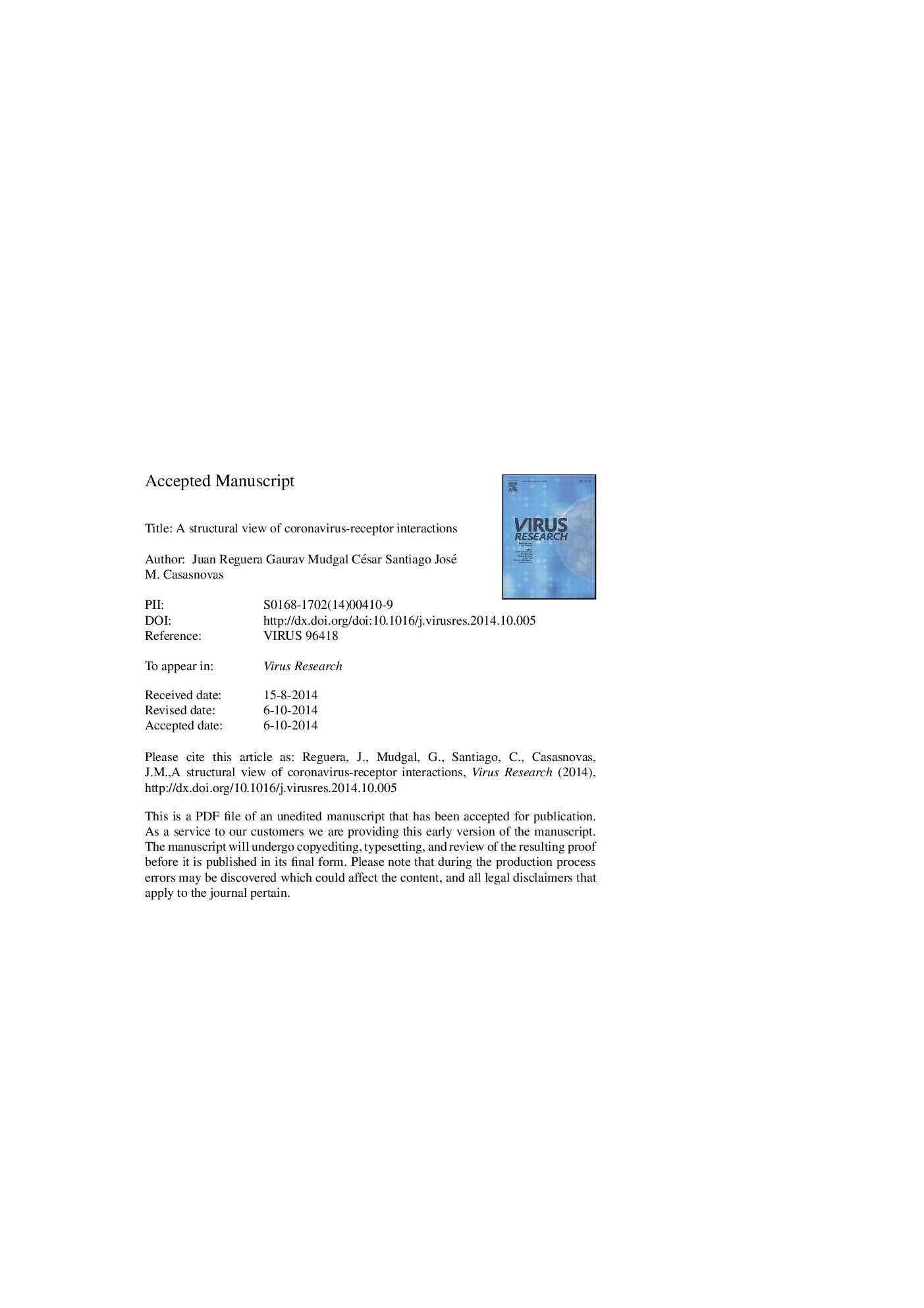| Article ID | Journal | Published Year | Pages | File Type |
|---|---|---|---|---|
| 6142291 | Virus Research | 2014 | 50 Pages |
Abstract
In the coronavirus (CoV), the envelope spike (S) glycoprotein is responsible for CoV cell entry and host-to-host transmission. The S is a multifunctional glycoprotein that mediates both attachment of CoV particles to cell surface receptor molecules as well as membrane penetration by fusion. Receptor-binding domains (RBD) have been identified in the S of diverse CoV; they usually contain antigenic determinants targeted by antibodies that neutralize CoV infections. To penetrate host cells, the CoV can use various cell surface molecules, although they preferentially bind to ectoenzymes. Several crystal structures have determined the folding of CoV RBD and the mode by which they recognize cell entry receptors. Here we review the CoV-receptor complex structures reported to date, and highlight the distinct receptor recognition modes, common features, and key determinants of the binding specificity. Structural studies have established the basis for understanding receptor recognition diversity in CoV, its evolution and the adaptation of this virus family to different hosts. CoV responsible for recent outbreaks have extraordinary potential for cross-species transmission; their RBD bear large platforms specialized in recognition of receptors from different species, which facilitates host-to-host circulation and adaptation to man.
Related Topics
Life Sciences
Immunology and Microbiology
Virology
Authors
Juan Reguera, Gaurav Mudgal, César Santiago, José M. Casasnovas,
